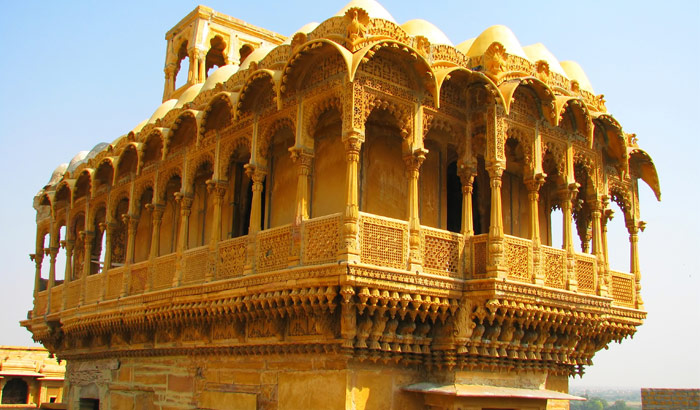Havelis of Jaisalmer
The city of Jaisalmer has seen distinctive types of design in various periods. The antiquated circumstances saw overwhelming Rajputana design where as the medieval period saw the combination of Rajputana and inconspicuous Islamic engineering. It is this time saw the development of the greater part of the Havelis. Haveli is places, which filled in as the habitation of Wazirs i.e. pastors and proprietors. Typically they are enormous and have loads of rooms and open space. There is no shortage of Havelis in Jaisalmer as the place has seen numerous wazirs and Landlords. The most well known among these is Patwon Ji ki Haveli. This Haveli was the first in Jaisalmer that is the reason it has more noteworthy centrality. This Haveli turned into the pioneer of the developments in Jaisalmer. Patwon Ji ki Haveli is really the accumulation of 5 little Havelis. In the event that you need to witness the coherence in plan, you should visit Nathmal Ji ki Haveli. Investigate the unobtrusive combination of Rajasthani and Islamic school of engineering. It is a Haveli developed by two siblings. There are fascinating stories identified with its development. They give an understanding to the then winning types of Architecture. Last yet not the slightest among major Havelis is Salim Ji ki haveli. Worked in 1815, this Haveli is renowned for its remarkable design in light of the Peacock. Have a perspective of the city from one of its various overhangs and you will get the genuine photo of the clamoring city.
.jpg) Patwon Ki Haveli
Patwon Ki Haveli
.jpg) Nathmal Ji Ki Haveli
Nathmal Ji Ki Haveli
This Nathmal Ji ki haveli was dispatched to fill in as the habitation of Diwan Mohata Nathmal, the then Prime Minister of Jaisalmer. Maharawal Beri Sal charged the development of this Haveli. The engineers of this haveli were Hathi and Lulu who happened to be siblings. There is an extremely intriguing story with respect to its development. It is said that the two siblings began building distinctive aspects of haveli all the while. In those days there were no such instruments, which could keep a track on congruity and accordingly when this building came up at long last it had sporadic shape. Notwithstanding that, this haveli is as yet thought about the best in Jaisalmer as far as magnificence. There are other moment subtle elements worth appreciation. For instance there are two Elephants made of yellow stone. These life-measure imitations have been placed before the fundamental passageway with the goal that it looks as though they are guarding the Haveli. Other than these, there are pictures engraved on columns and dividers. These comprise of Horses, Cattle, and portrayal of Flora in addition to other things. Be that as it may, the most fascinating part of this haveli is the illustration of present day pleasantries, for example, autos, fans and so on. It is said and trusted that the Architect siblings dint see these things ever in their life and engraved it with insignificant help of their depictions given by individuals who had seen it. Thus the engineering present in this haveli is very unique in relation to the one prevalent in different parts of Jaisalmer. The workmanship of Jaisalmer havelis is an amalgam of both Rajput engineering and in addition Islamic craftsmanship that was transported in by means of the brokers' troop through the leave.
 Salim Ji Ki Haveli Jaisalamer
Salim Ji Ki Haveli Jaisalamer
Salim Singh ki haveli has been based on the remaining parts of a more established haveli worked in the late seventeenth century. The new building was worked in the year 1815 and was involved by the Mehta group of Jaisalmer. They were the most compelling group of their chance. This haveli was charged by Salim Singh, the then Prime Minister of the kingdom when Jaisalmer was the capital. The haveli has a particular design. The rooftop has been built as Peacock. The haveli is arranged close to the slopes close to the Jaisalmer Fort. Individuals guarantee that Salim Singh influenced two extra floors with a specific end goal to make to it as high as the fortification yet the Maharaja did not take this endeavor in great soul. He requested the additional floors to be torn down. By the by we don't discover enough confirmation to prove the story. Like different havelis in Jaisalmer, this too has tuskers guarding the passages. These are made of sand stones and look near the first in appearance. The haveli comprises of upwards of 38 galleries and they all have particular plans for themselves. The front feature of the haveli takes after ship stern and accordingly this haveli is likewise at times alluded as Jahazmahal.

